Bahrain Contemporary Arts Society, Juffair, 8th December 2018
Medium: Collage and Mixed media on wood
“The heart is a strange beast and not ruled by logic” ― Maria V. Snyder
The human condition (emotion) has always consumed and fascinated me. The intensity of emotion; the way people handle it very differently (controlled and uncontrolled), has a roll-on effect to our decision-making, altering the course of our lives. One decision in tandem with another changes our path in an instant and alters our life story. Under the same conditions, one person may thrive whereas another may weaken depending on their emotional state.
Our life experiences are ‘layered’, year on year in different intensities, some light and some heavy. This resembles the effects on surfaces affected by their environments, where there is constant addition and subtraction.
The “emotional” series of works is a visual interpretation of emotional timelines of individuals using abstract minimalistic photographs of found surface textures. A ‘key’ of 25 emotions was formed by equating each emotion with a texture; and then creating beautiful symphonies of pattern and colour based on the timelines of the individuals. The individuals remembering and documenting their emotional journeys and the visual interpretations of their feelings, show that we have human tendencies and that the majority of the time it is hard to control all-consuming emotions. Our emotions show us if we were ‘present’ mentally or ‘switched off’ when they were heavy to bear.
Reclaimed wood was chosen as the base for the timeline collages, due to it being a natural biological material that incurs growth despite condition; just like a human being, each with its own character and its own beautiful intrinsic details, making each piece unique. The grain and growth lines, synonymous with the individuals physical and psychological growth, are perfect backdrops to the up and down waves of colour and texture of the individual's feelings.
We are products of our emotions whether we like it or not; as they drive our decisions and change our paths for better or worse. Emotional mapping is cathartic as it allows one to reflect and to choose to heal by setting intentions that over-ride our emotions. When they are acknowledged and accepted, the process of healing begins.


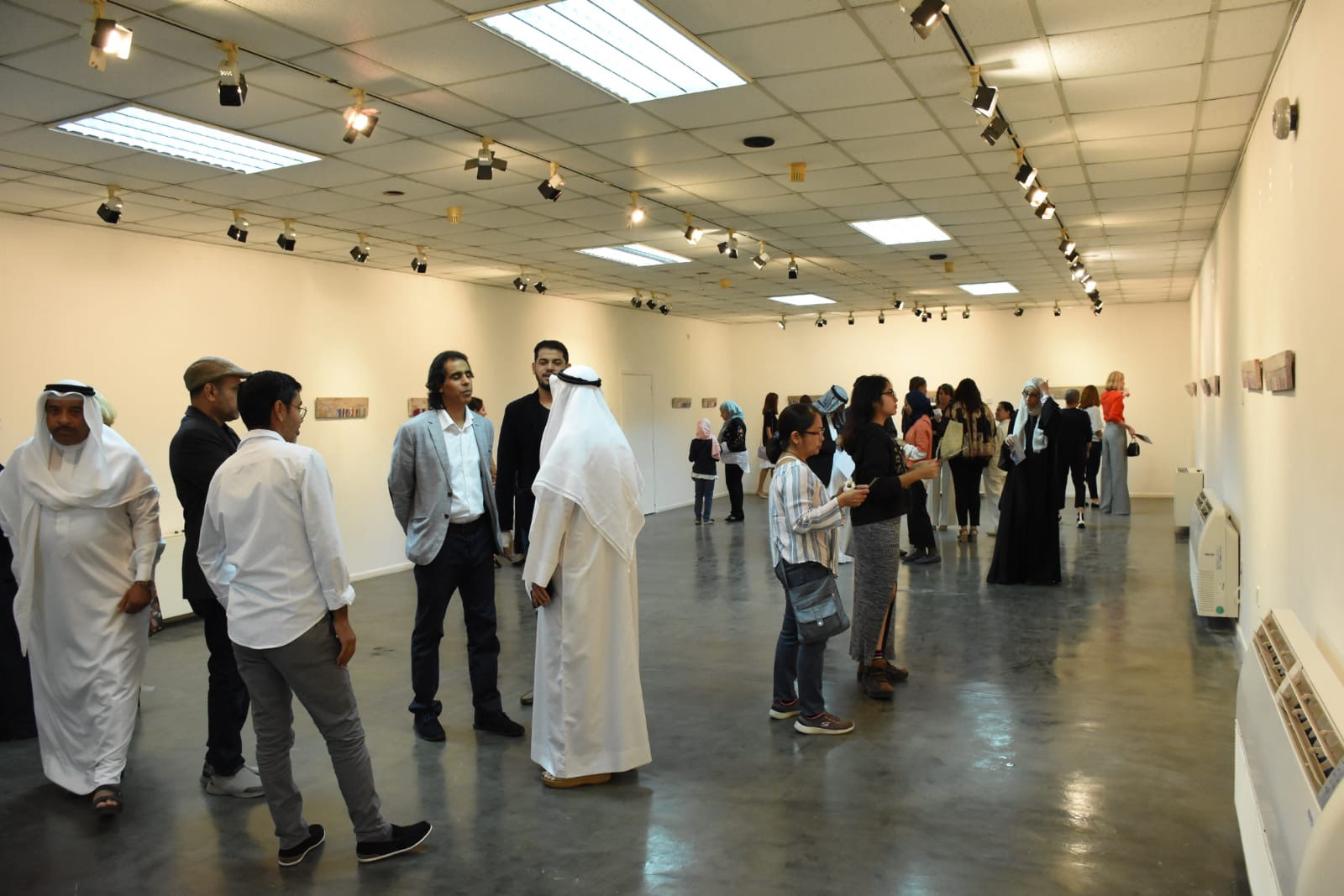


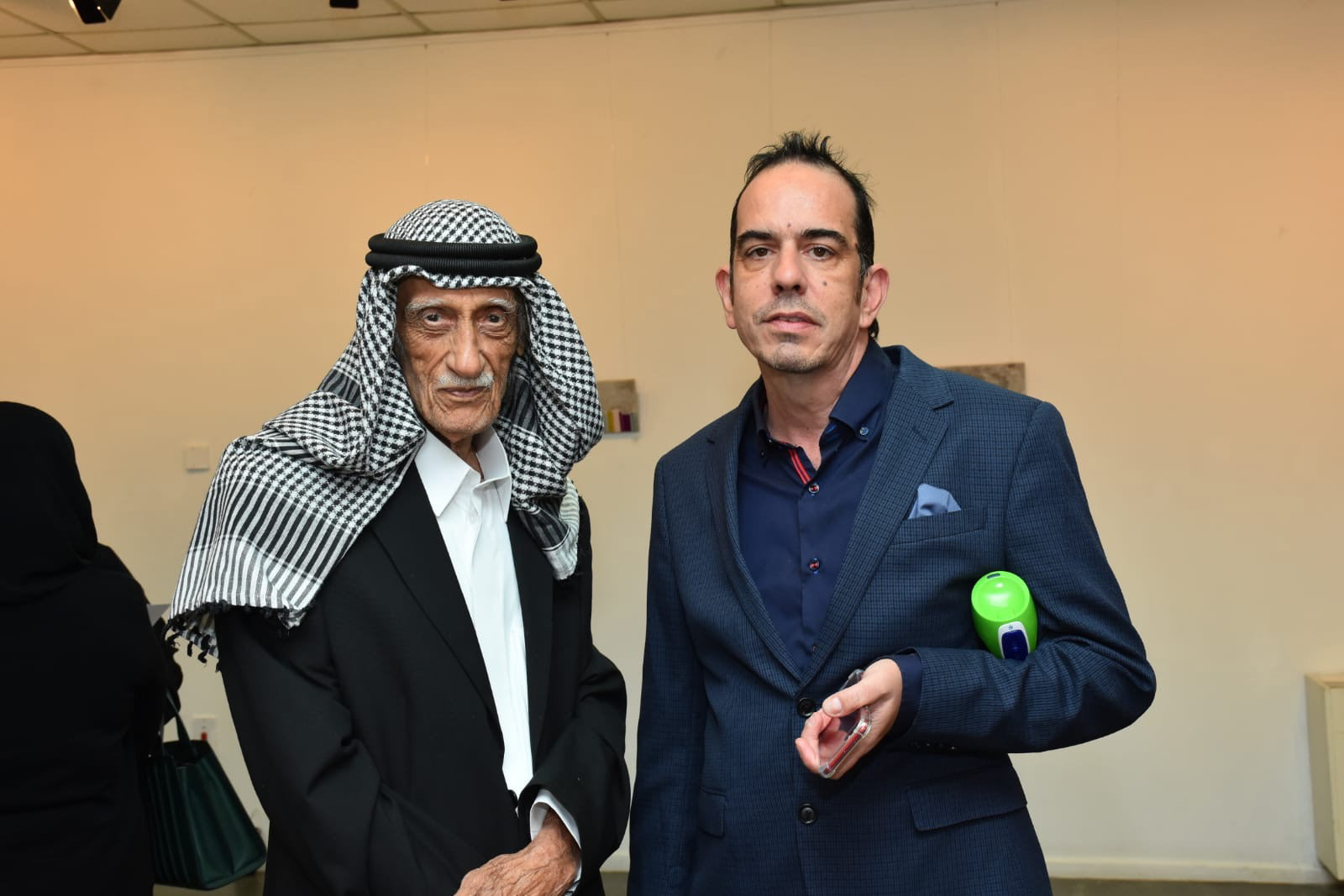


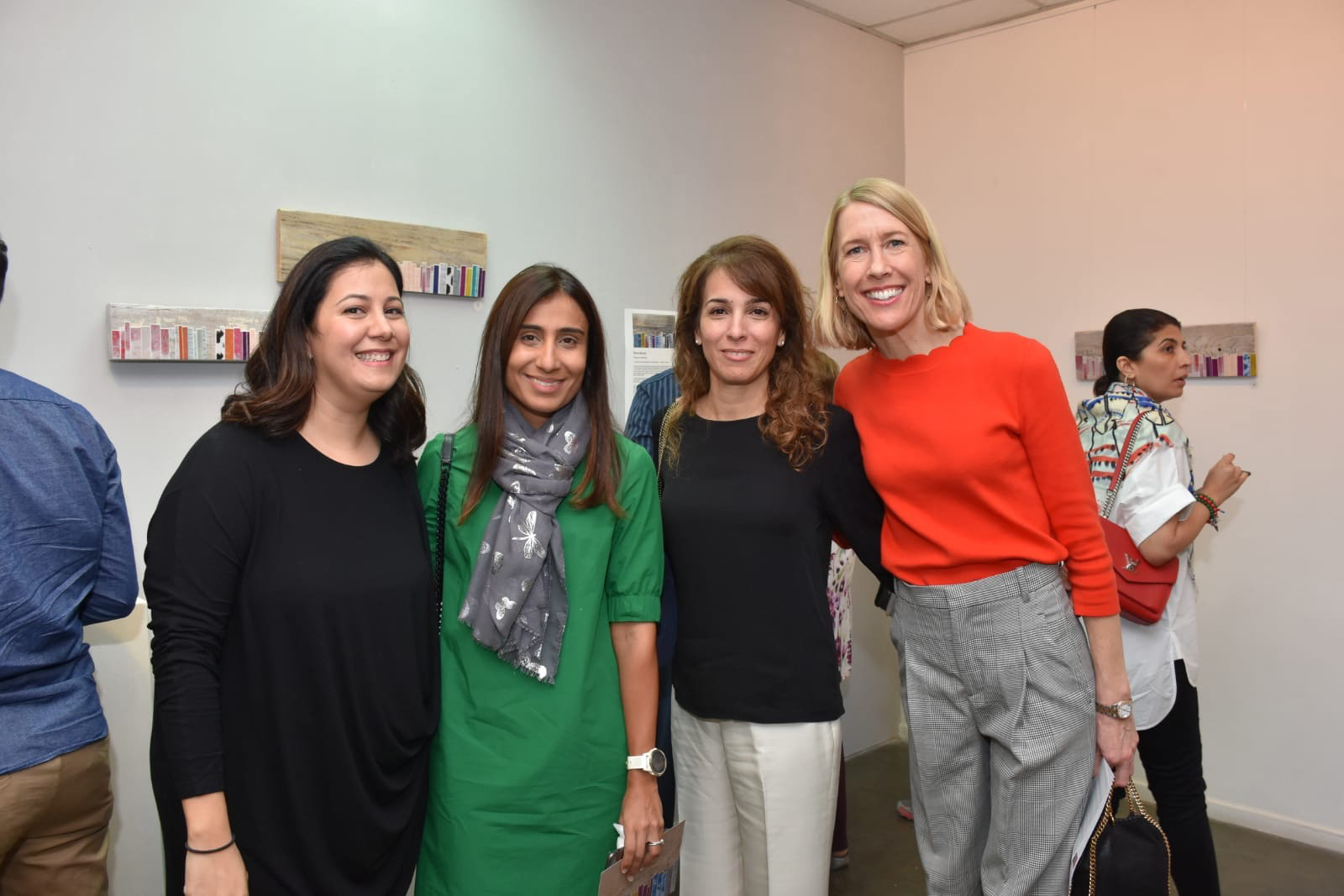


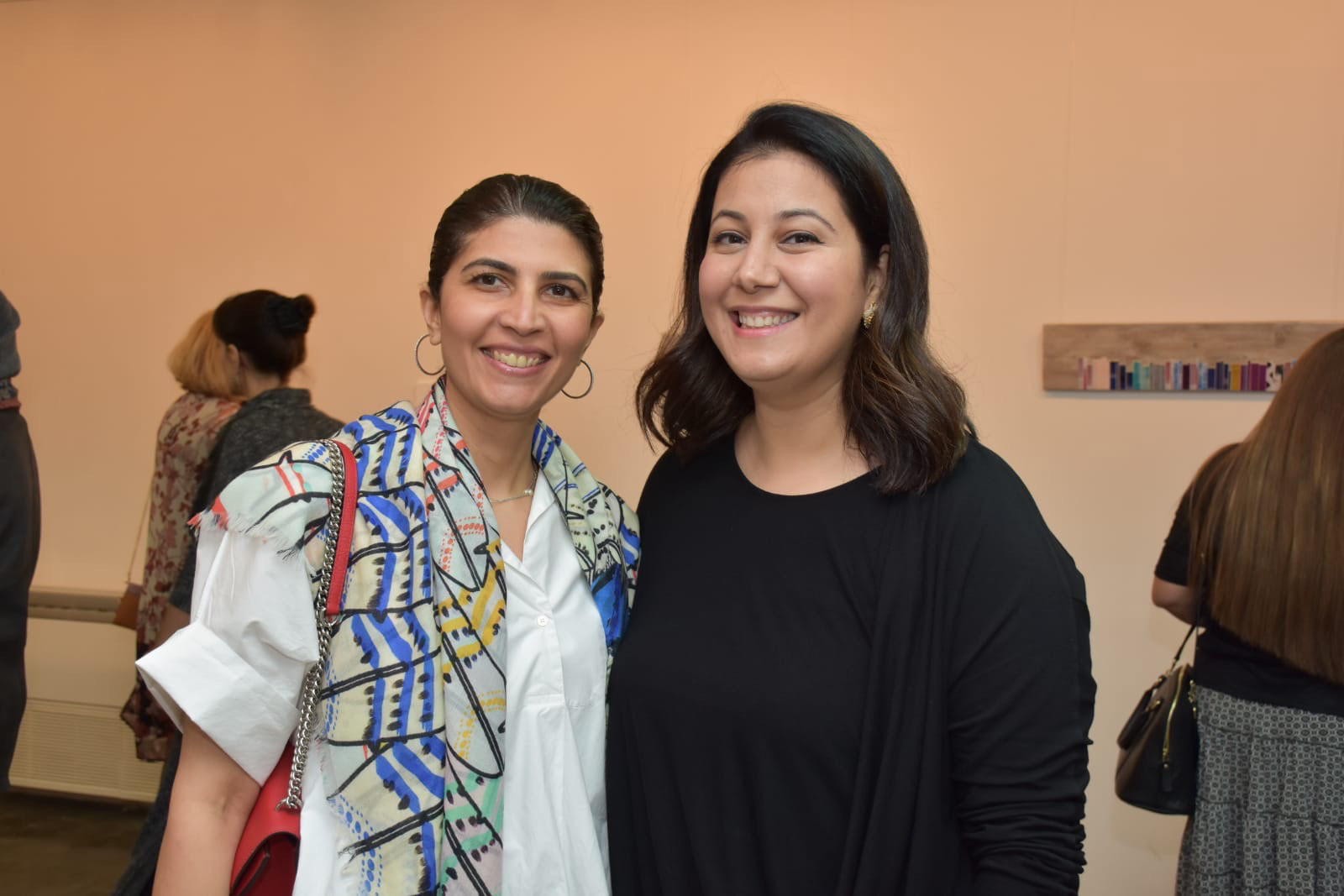

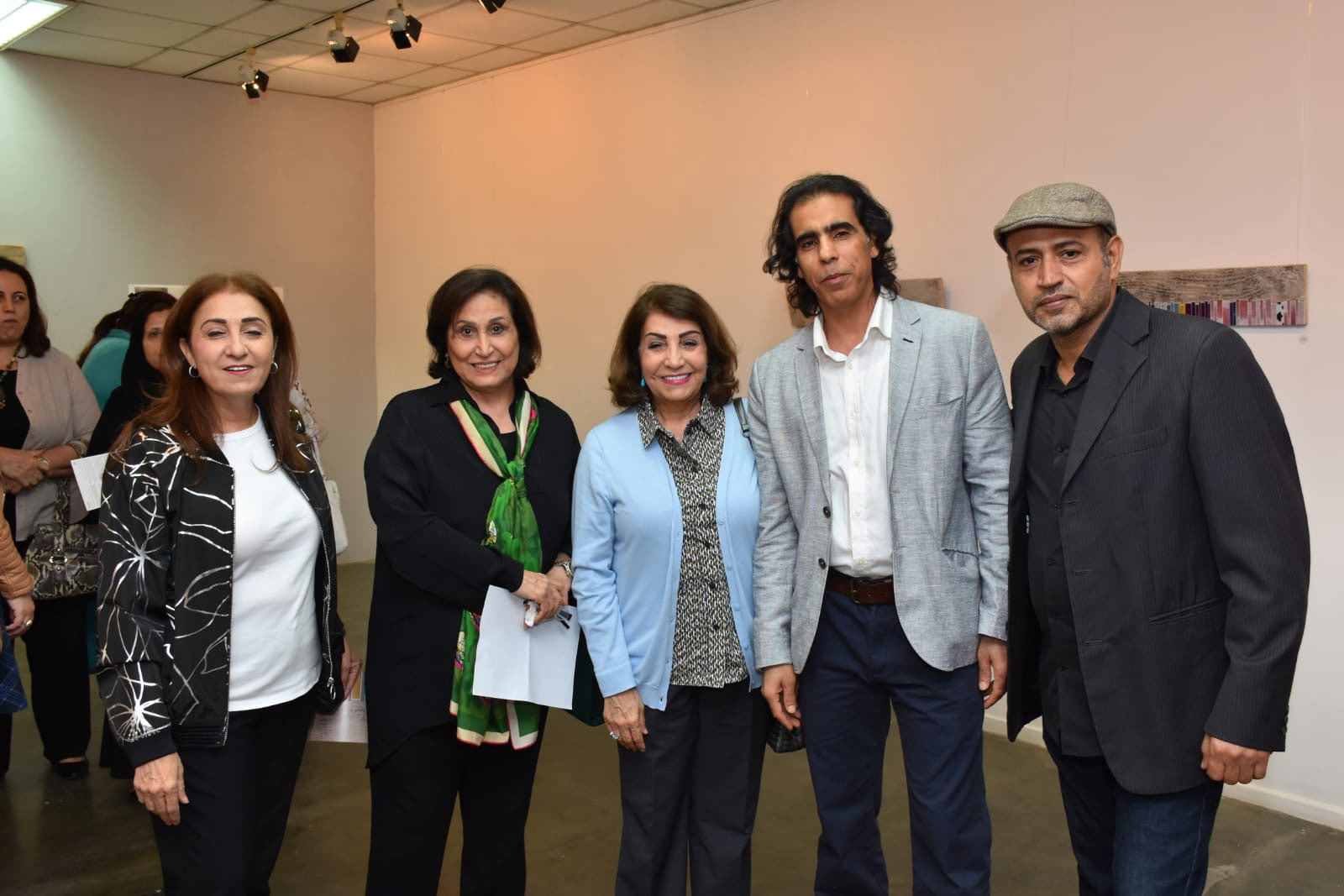






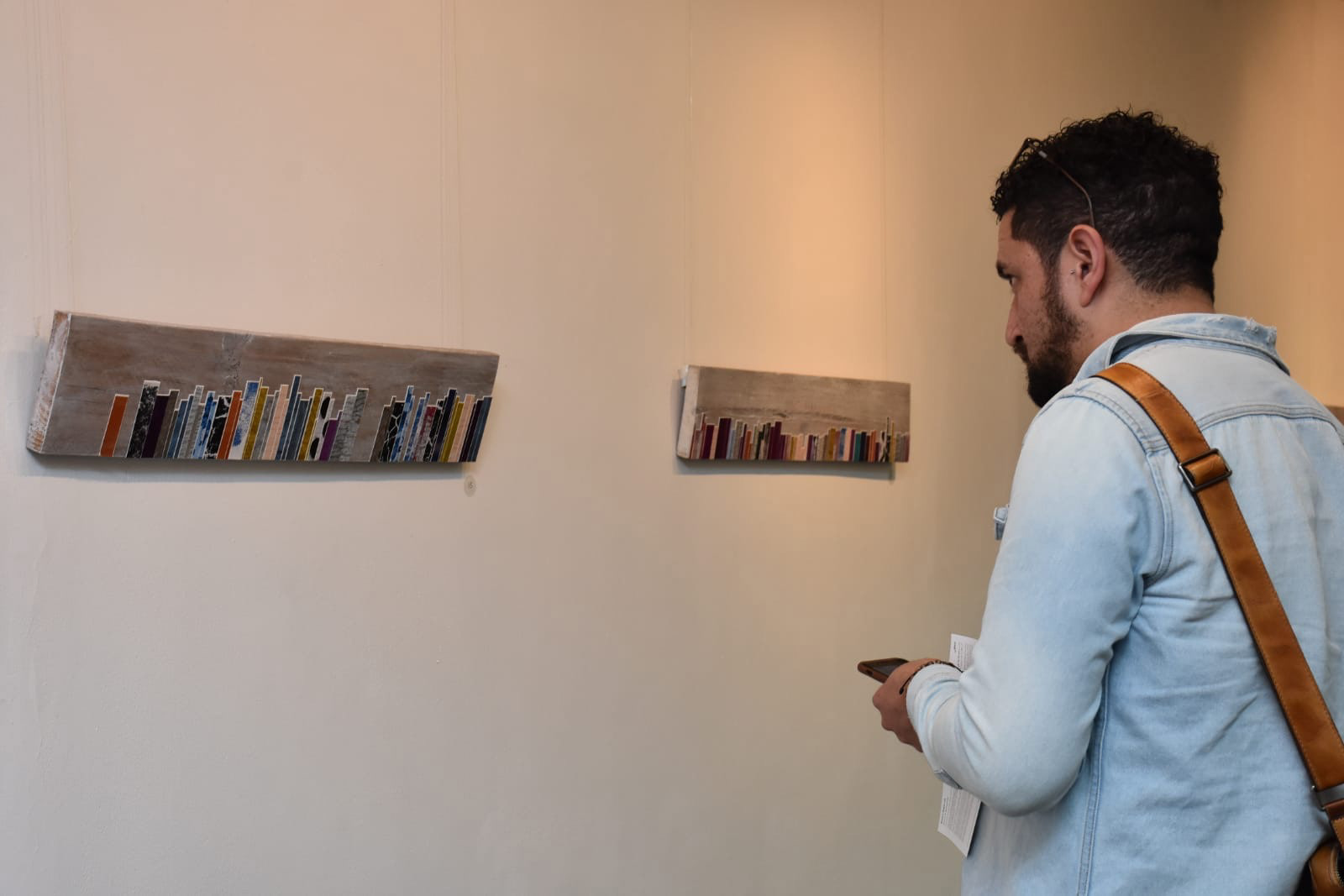








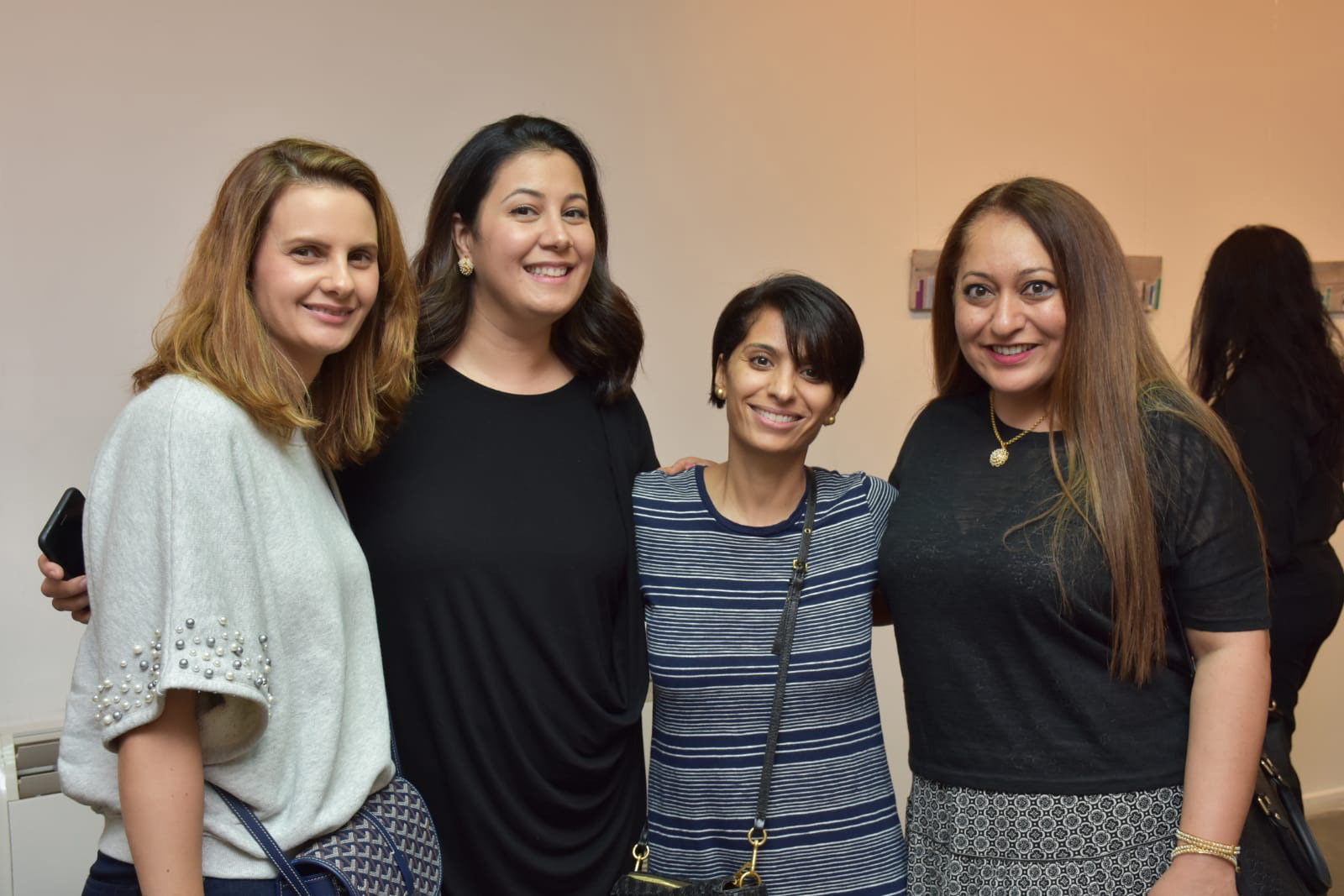






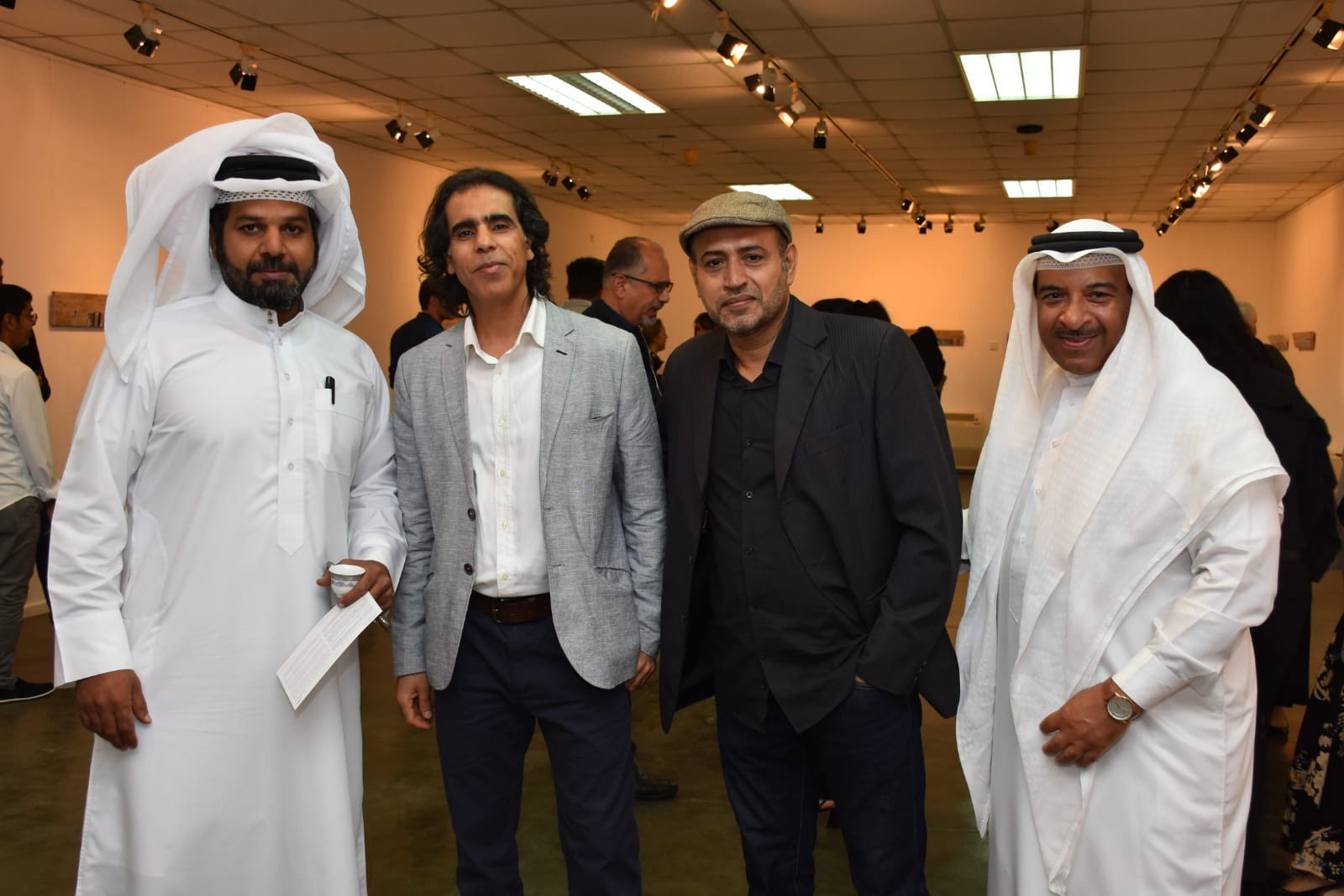
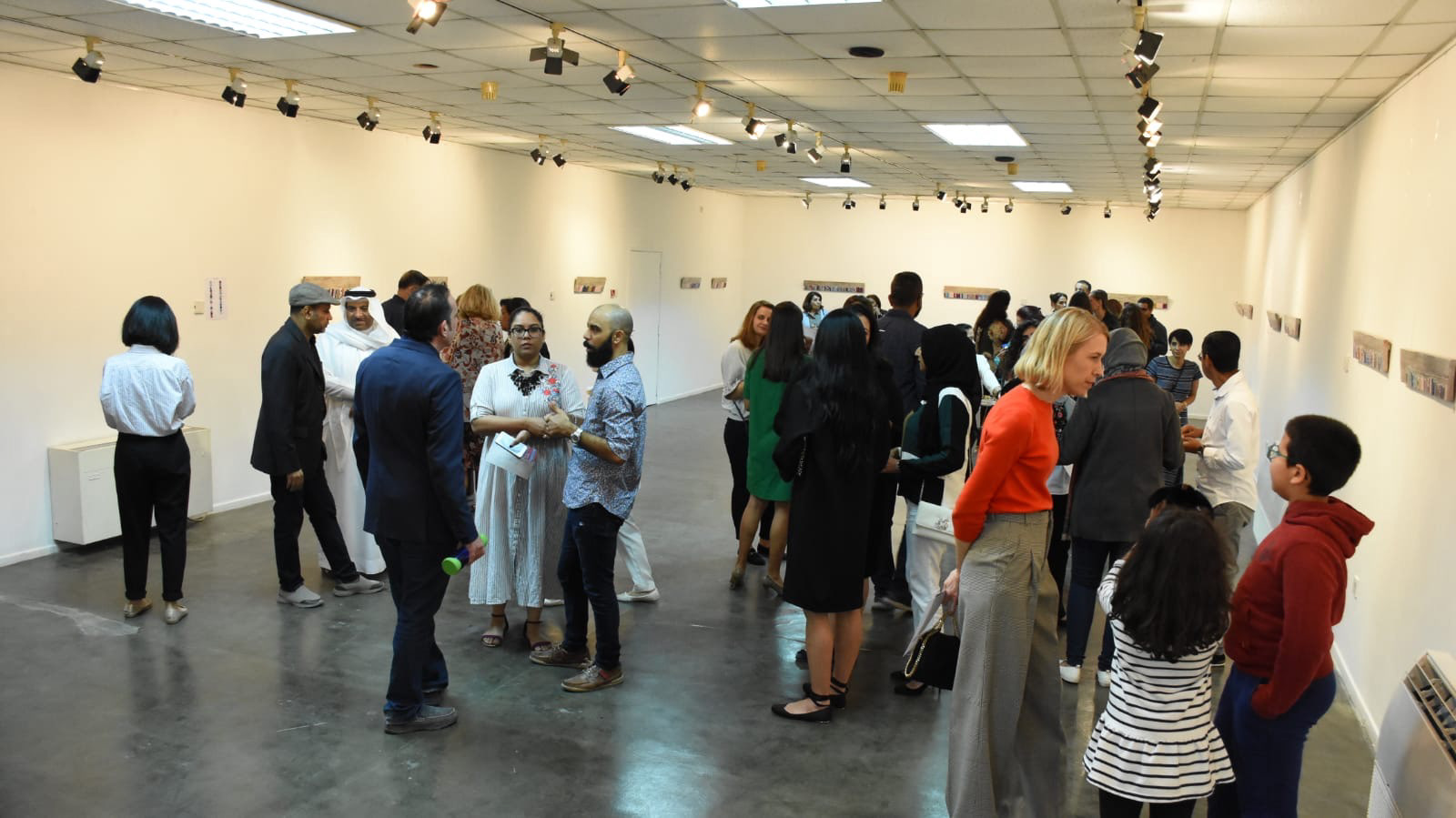


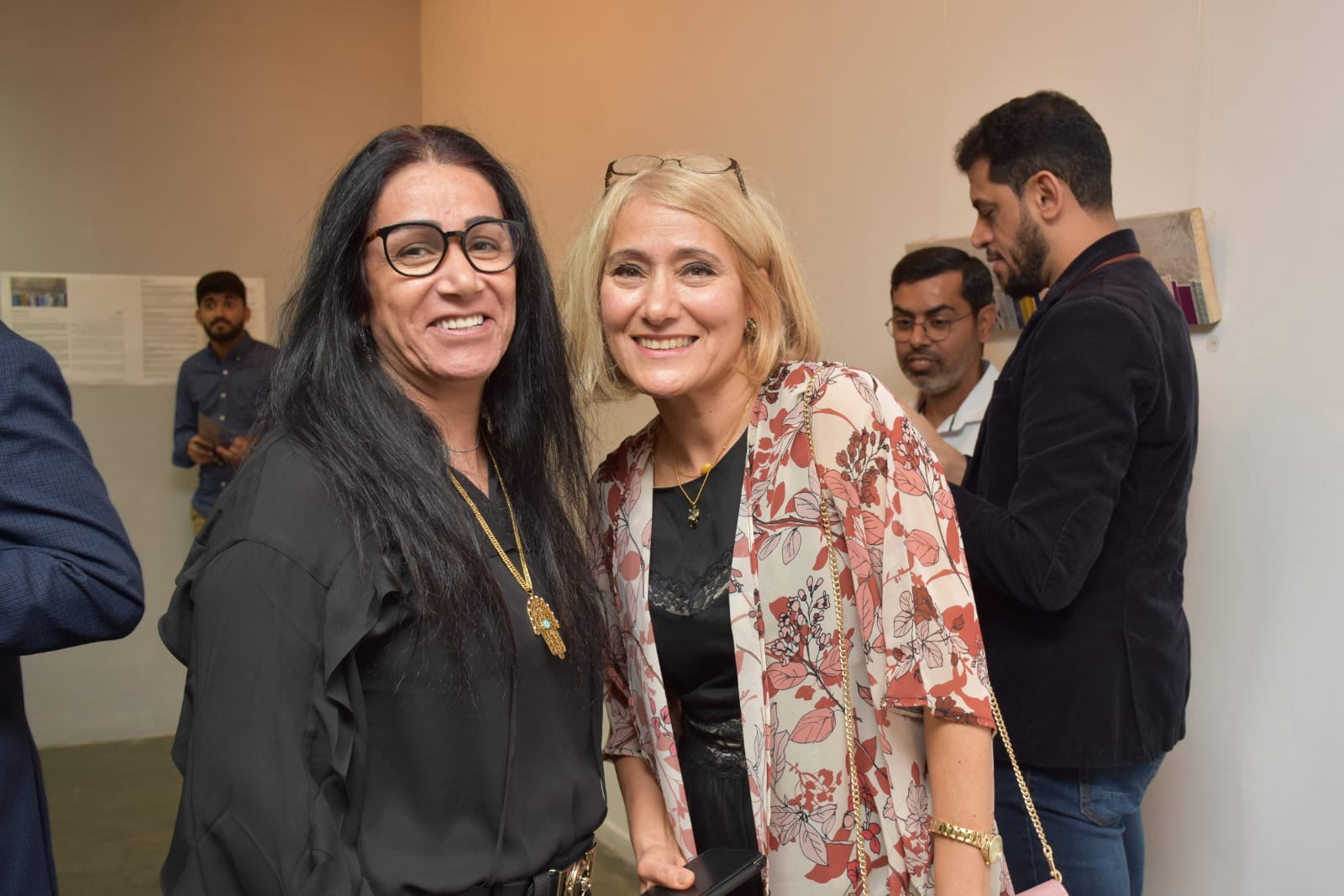



Informational Interview with Alaa AlShroogi (Ex-Director of Cuadro Gallery Dubai)
(A) Works requiring participatory interaction or input can often be surprising or unexpected because you as the artist relinquish control of the output. Was that the case with Emotional?
(T) Absolutely, this is why I injected disciplined structure through the process.
In terms of output, I appreciated the honesty of responses in this intimate project and did find some results surprising. As individuals, we are all built differently; some people are generally more open and share more than others. Also the duration of time taken to fill the emotional timeline varied greatly amongst participants due to some people being very in tune with their emotions and others struggling to remember or allowing certain feelings to resurface, putting them in a position of remembering things they had long forgotten. For many of us, the phase of life we are in now determines if we want to face our past.
(A) This series is a coded map of emotions. How do the emotions map to the visuals?
(T) Each texture and color combination maps to one emotion.
(A) What was the number of emotions subjects could select from, and how did you arrive at this number?
(T) There were 25 emotions in total which were listed in a basic emotions chart by Shaver et al. (2001) although psychologists mainly identify six primary emotions (love, joy, surprise, anger, sadness, fear) the emotions stem from these. Only offering six emotions as choices felt too narrow and therefore I gave the participants what felt like a more comprehensive list with derivatives of these core emotions. Even these 25 felt very restrictive to some.
(A) Whether positive or negative, it is difficult to pinpoint only one emotion for a single day, let alone a whole year. Were you conscious of this?
(T) I was, and my intention was not to capture every emotion; but the main overriding one during each year of the person’s life so far. For some it was easy as losing a loved one or grief would mean sadness etc. Some people genuinely struggled to find the right words to encapsulate their emotions and therefore it was harder to pinpoint and took more time to be satisfied with their choice.
(A) Why did you invite this reflection on emotions?
(T) The series is a process of healing and letting go. Nothing is static, especially emotions, and this was a way of looking back at one’s life to understand the past to be able to move forward. For me personally, this past year has been a very difficult one emotionally. Many of us are on autopilot during many years of our lives, numb to certain realities. Recognizing and accepting our feelings means we are able to ‘wake up’.
There is an emotional maturity that results from looking back, an acceptance of past experiences, no matter how overwhelming. Retrospectively, looking back comes with sense of detachment; no matter what someone has been through, they always look back with a different mental state.
The outcomes were fascinating; one participant who had endured a lot of pain as a child, registered it as “contentment” due to numbing or disassociating from the pain as a coping mechanism. Maybe masking the original emotion is a way to rewrite those years not as they were, but as one feels after coming to terms with them. We go through so much, but we ultimately have a choice on how we wish to represent our experiences.
(A) The reflection in this case is split into seven-year cycles. Why this specific number?
(T) Seven is an interesting number as it recurs across multiple disciplines. Seven years made sense as a point of departure from one life phase to the next. From the age of 1-7 one is a child, from 7-14, they develop an intellect, from 14-21, their identity is formed, and so on. I researched spiritual cycles and they follow a similar pattern.
(A) Where did you source the textures?
(T) The textures are mostly worn surfaces from buildings (architectural). They are close-up images of doors, walls, windows, which, like the wood upon which they are mounted, are sourced mostly from different buildings or building sites around Bahrain. I photographed decaying, withering, neglected structures that bear witness to the experience of life.
(A) You mentioned the textures are primarily from buildings or building sites. What attracts you to these spaces and when and why did you move away from them?
(T) The human condition is transient and goes through so many different iterations. The textures are a genuine physical reflection of change; they by definition have to be altered to exist.
I struggled to find more vibrant colors for more intense or challenging emotions, for example, purple is a regal color which I associated with pride. I sourced these more colorful textures from an older section of the Manama souq. I still found decaying buildings, with astonishingly bright shutters and doors. Unlike the building sites, many of the structures in the souq are occupied, so as textures, they are alive and their layers continue to deepen.
(A) You mentioned you sourced the reclaimed wood from a wood yard that originally obtained them from building sites. Why did you select wood specifically and why did you choose to treat it?
(T) Wood is a biological / natural living material which holds remnants of its past. The material changes physically based on external factors, just as we do emotionally. Furthermore, every year of a tree’s life is represented in a line, which was the perfect backdrop for emotions expressed by year. The process of sourcing, cleaning, sealing, and white-washing the wood so as it could be used as a base was interesting as it a new material for me.
The material, threaded with lines and varied from piece to piece is as varied as the people themselves and their emotions. As the contrast of the brownish wood colour was harsh, I whitewashed it to soften it a little as I didn’t want the colour and grain to overshadow the emotions.
(A) Do the colors of the texture images hold any significance?
(T) Combining color and texture was critical to the process. I researched the significance of different colors and there is definitely a consensus on specific colors representing emotions. I employed the standard associations where I agreed with them, and where I couldn’t relate the emotion with the corresponding color, I selected a color that I personally felt resonated with and mirrored the nuance of the sentiment. It’s difficult to explain why I made the decision to redefine some emotions. I actually find it fascinating that even I don’t have all the answers, a combination simply had to feel right.
(A) Emotions are, as you mention, fluid. Why then did you select strict geometric bars for their visual representation?
(T) The geometry added order to mercurial emotions. The bars added structure, though I admit that I did find them restrictive, as I am usually more expressive with my work.
Aesthetically, the wood segments are rectangular and the bars offered a strong visual complement. I deliberately created a white framing mechanism around each bar. I felt that each emotion is precious and space was needed to retain the distinction of each one. This execution also allows the viewer to easily select whether to take in the individual emotions or the gestalt.
(A) What factors determine the bar length and width?
(T) The visual representation of the emotions -in terms of height of the textures- is one of the few places I allowed myself artistic license in a series that was deliberately formal in its execution. It was a personal decision, combining aesthetics with my familiarity with the person’s background. I injected my own assessment on how deeply an emotion may have resonated that year, which determines the final representation of the bar.
(A) You knew the subjects whose emotions you showcased. How did you select them and what was the age range?
(T) I actively sought diversity, so the subjects are by design a mix of different ages and backgrounds. I know all of them to varying degrees and was interested in the way in which emotions would manifest in their deeply personal responses. There is quite a range in terms of age; the youngest is 26 and the eldest is 63.
(A) Did you find patterns in the way people responded?
(T) Many people attached an emotion to every year of their life. The subjects with more gaps between the years tended to be older and, interestingly, their emotions looking back tended to be more positive.
There were definitely emotional patterns depending on life phases as well. In the early years, the most common feelings are those of contentment, joy and love. These then most often shift in early adulthood to neglect, nervousness, fear and anger.
An unexpected emotion that recurred in every response is pride. It materializes in different years for different people, but is present across most of the timelines.
(A) Were there other surprises as you examined the responses?
(T) I asked respondents to provide an overriding emotion for each seven-year cycle. Intriguingly, in most cases they did not match what was listed in the individual years. For instance, someone whose seven years were difficult or challenging would provide an overarching response of “Joy”. In other cases Perhaps this is a method of reconciliation with the past through reflection.
People’s characters are built on emotions and looking through the responses, the kindest characters have witnessed the most difficult emotions. It’s possible that the synthesis of numerous challenging experiences is positive people with more empathy and kindness.
(A) This is a very intimate, revealing process. Did all subjects welcome it?
(T) No, actually. Some people declined the invitation to respond as they found it to be too revealing. In contrast, others went as far as requesting to have their name on their piece. Often, the latter group were individuals who had seen a lot of suffering; they were proud of their struggle and had reached a point of being comfortable sharing it.
(A) Did you welcome this process yourself? By that I mean are you one of the subjects in this series?
(T) I did and I am. It was quite difficult, despite the fact that I’ve accepted where I am in my life and am comfortable discussing my emotions.
(A) Did you create this series at this point because you felt you were ready for or needed it?
(T) I have gone through a number of emotional experiences recently and to address them, I did an exercise where I wrote down all the words that came to my mind and interestingly, most were emotion-driven. This simple exercise was my inspiration for the Emotional series.
The work is very fitting for me at this moment of reflection and reassessment. I remembered many things I had previously filtered or shelved by going through this exercise. When you mature to some extent emotionally you are ready to face your I’m now ready to face them.
(A) Given how important your personal emotions are to the series, what did you feel as you went through and completed it?
(T) The collage was more systematic and rigid than I am accustomed to in my practice. The process was less free as the pieces fit into structured 2cm increments, however this was also helpful and ironically dealt with a chaotic messy subject in a very structured way.
Seeing the different timelines come together was very moving. I felt that people had let me see their most personal reflections. As I completed my own set of emotions and became a subject myself, I found it incredibly healing. I can only hope the subjects felt the same catharsis.
December 2018 - Emotional - Contemporary Art Society





